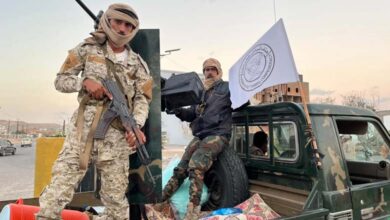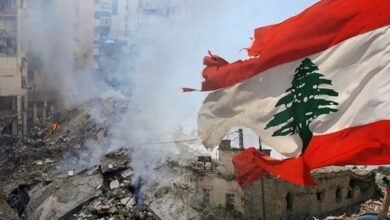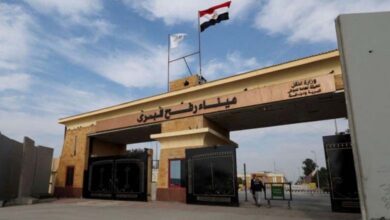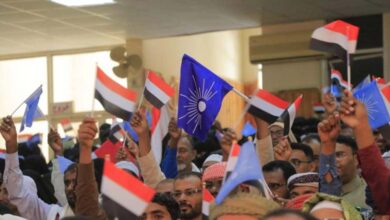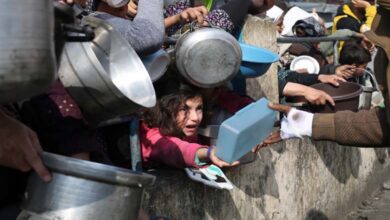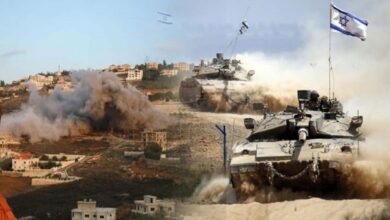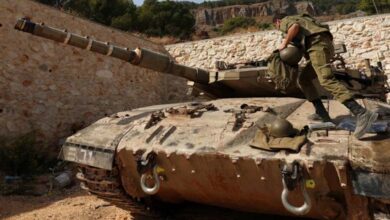New information about the October 7 attack
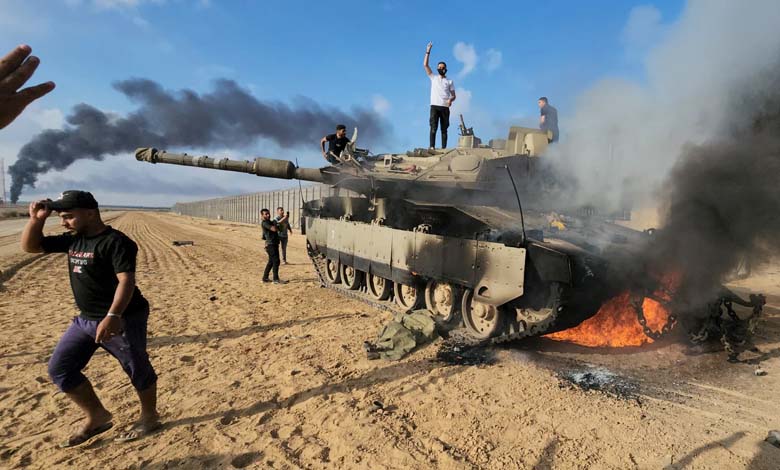
Sources revealed new details about the October 7th attack to the “Middle East” newspaper, related to the past attack carried out by the Al-Qassam Brigades, the armed wing of Hamas, in Israeli settlements in the Gaza Strip.
The sources stated that the attack began with only 70 fighters executing a surprise attack from various areas along the sector’s borders, from north to south. These fighters surpassed the Israeli border barrier in the first moments by detonating specially prepared explosive devices to breach thick walls after identifying weak points. They also used gliders and parachutes to drop fighters behind, above, and around Israeli positions.
The sources explained to the newspaper that these fighters were selected from various areas of the sector from among hundreds of “elite unit” members. They underwent intensive training over the years, with special tests periodically conducted to assess and enhance their combat skills. The plan to infiltrate the settlements in the Gaza Strip was not new, but had been conceived and prepared before the 2014 war. When that war erupted, the plan was frozen before efforts resumed a year later. With the outbreak of the “Sword of Jerusalem” battle in 2021, the military wing of Hamas decided to prepare and execute the plan when conditions were ripe.
The elite members chosen for the operation were sworn to secrecy about their training, refraining from discussing any plans related to those exercises. Even though these members were unaware of a clear and imminent attack plan, they received specialized training on infiltrating settlements.
According to the Middle East, many leaders of the brigades in the Gaza Strip were unaware of any details or even the intention of an imminent attack. Some were informed of limited information related to their tasks. This was part of a security plan to prevent any information leakage to the Israeli intelligence, which later admitted to its failure to prevent the events of October 7th.
As for the decision to carry out the attack and its timing, according to the same sources, only five individuals made that decision: Yahya Sinwar, the leader of Hamas in the Gaza Strip, Mohammed Deif, the leader of the Al-Qassam Brigades, Mohammed Sinwar “Yahya’s brother,” and the movement’s military leader, Rouhi Mushtaha. Alongside them was Ayman Nofal, a close associate of Deif and the former head of the Al-Qassam Brigades’ intelligence and the commander of the “Central Brigade” in the brigades, responsible for the joint operations room for the resistance. Israel assassinated him during the current war.
The sources added that those responsible for preparing the operation later informed the leaders of the Al-Qassam Brigades’ brigades in the Gaza Strip about the preparations and the attack plan but not its timing. They were notified three days before the final readiness, and then they met with the leaders of the regional brigades, assigning specific tasks without specifying the “point of origin.” The brigade leaders, in turn, prepared their selected forces for the mission. Ayman Siyam, the leader of the missile unit in the Gaza Strip (also assassinated during this war), received special instructions to prepare for launching hundreds of rockets simultaneously with the start of the attack.
The sources explained how October 7th was chosen following field reports from monitoring units confirming complete calm on the borders. The decision-makers chose Saturday morning (Israel’s official holiday) on Friday, October 6th, and waited for midnight to enter and gave the order to prepare. Field leaders and fighters of the “elite forces” received instructions and began moving until dawn, and then the operation began.
The secrecy surrounding the operation, in which political leaders of Hamas‘ Al-Qassam Brigades were involved, seems to have worked. The same sources stated that Hamas leaders inside and outside the Gaza Strip received a briefing hours before the operation, instructing them to disappear completely according to emergency security procedures.
The sources mentioned that top Hamas leaders, including Ismail Haniyeh and his deputy Saleh al-Arouri, were informed of an exceptional attack plan but without precise details or a date. They learned about the timing a few hours before, limited like the others.
The sources emphasized that the main goal of the plan was to carry out a “major qualitative attack” and capture a group of Israeli soldiers. However, surprises occurred that made the attack broader. Fighters were surprised by the ease with which Israeli defense lines collapsed, leading to the immediate killing, injuring, and capturing of a large number of soldiers. After an hour and a half of the initial attack, the remaining members of the “elite units” in the Al-Qassam Brigades were mobilized, receiving messages to gather at various points and move as support forces for the elements inside the settlements. Later, the military wings coordinator in the Al-Qassam Brigades informed the other armed factions of the possibility of participating in the operation, assigning specific tasks to each faction. The attack expanded, and hundreds of militants, civilians, and journalists successfully entered the settlements of the Gaza Strip after the collapse of the Israeli forces.
The sources confirmed that, after capturing dozens of Israelis amid considerable chaos, the Al-Qassam leadership asked the fighters in the settlements to engage the Israeli forces as much as possible, taking advantage of that to focus on the operation of collecting and hiding the captives.
Hamas, Palestinian factions, and families succeeded in transporting around 240 Israeli and non-Israeli captives (such as Thai workers) into the Gaza Strip. About 136 of them remain after prisoner exchanges conducted earlier. The Israeli army also found the bodies of some captives and transported them into Israel during the ongoing ground operations in the sector.
It is worth noting that the attack launched by Hamas resulted in the death of more than 1,200 Israelis and the kidnapping of over 200 others in settlements, kibbutzim, and military sites in the Gaza Strip. Israel has been waging retaliatory air and ground warfare, killing more than 23,000 Palestinians, mostly children and women.


